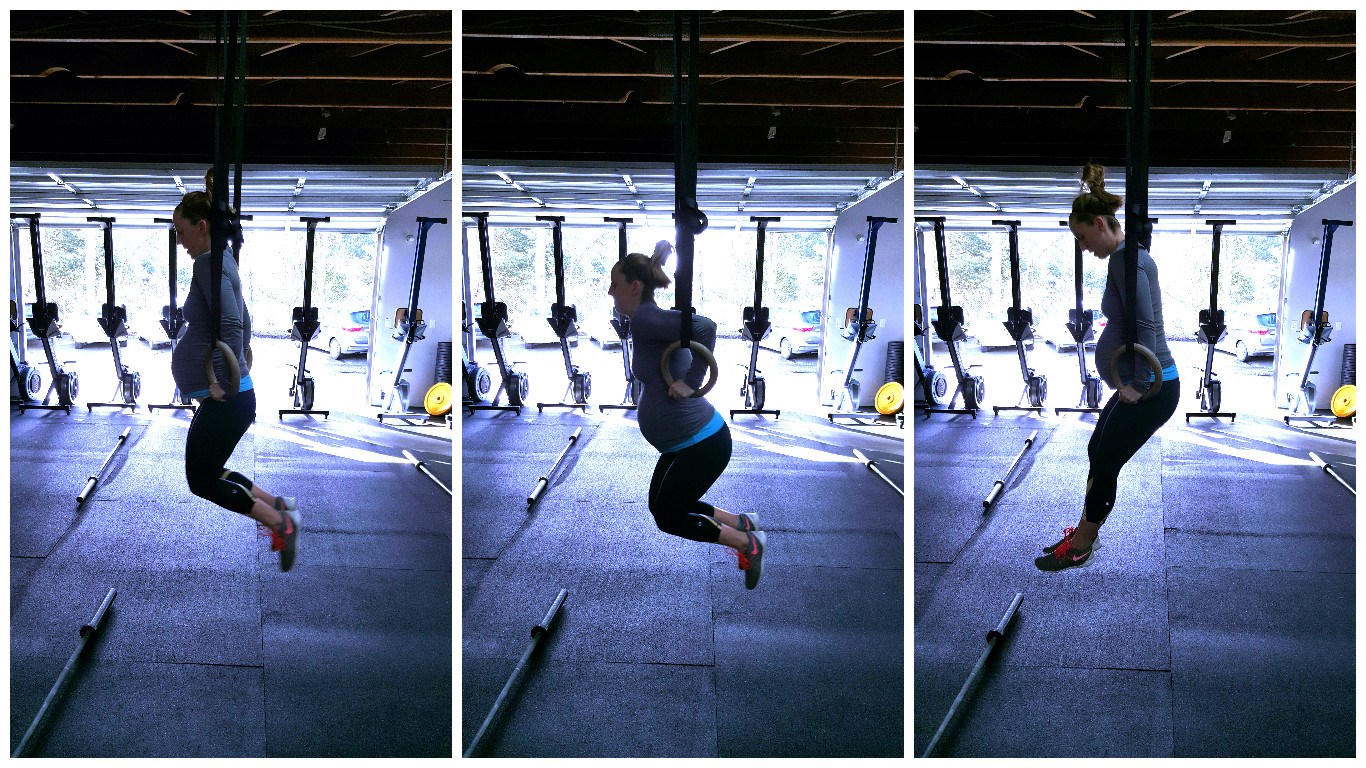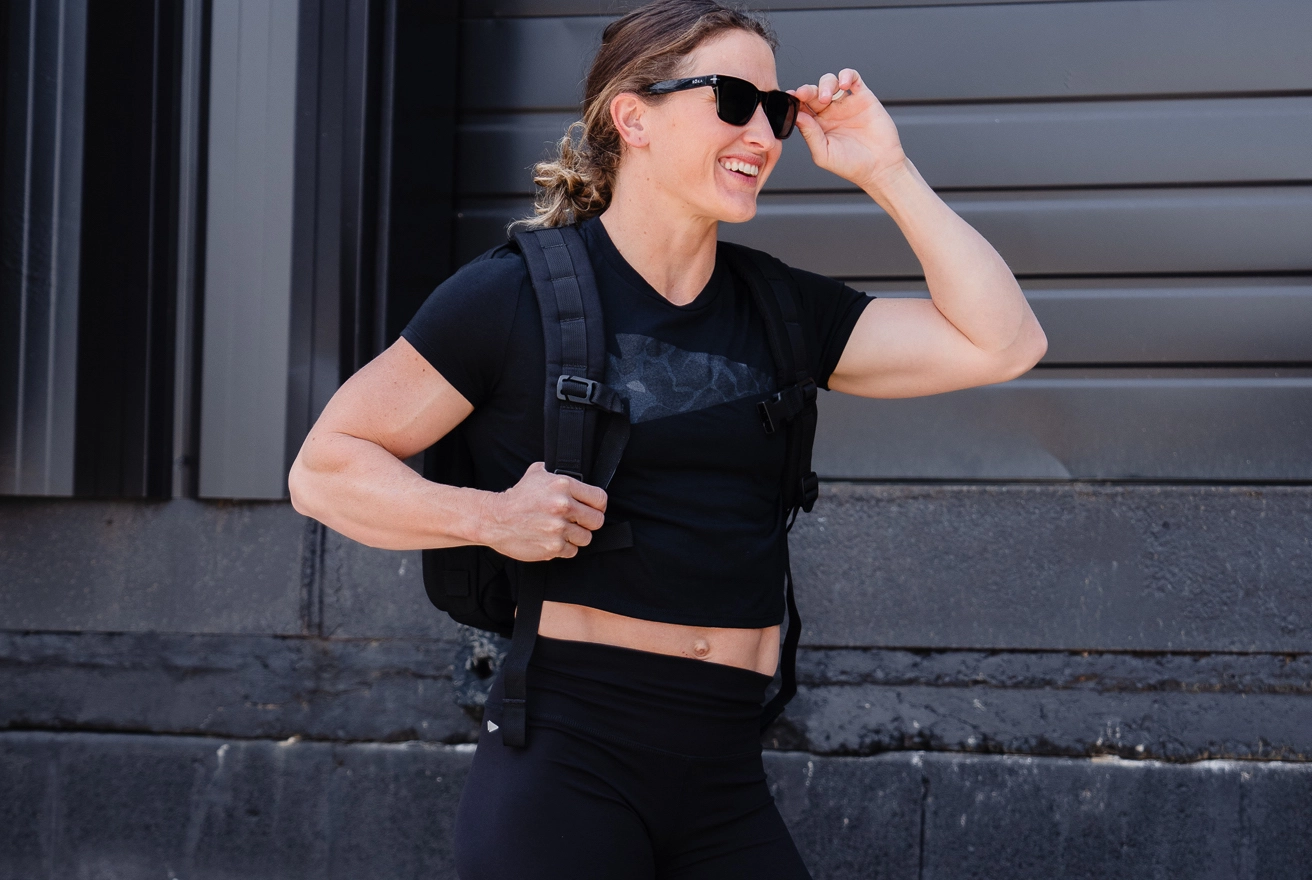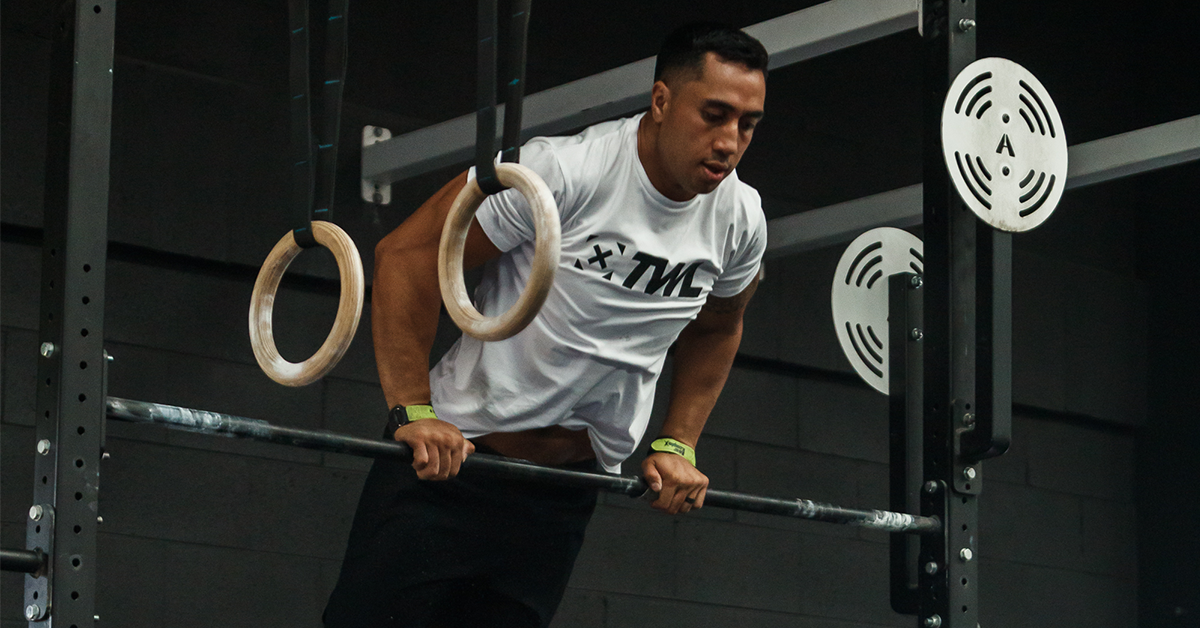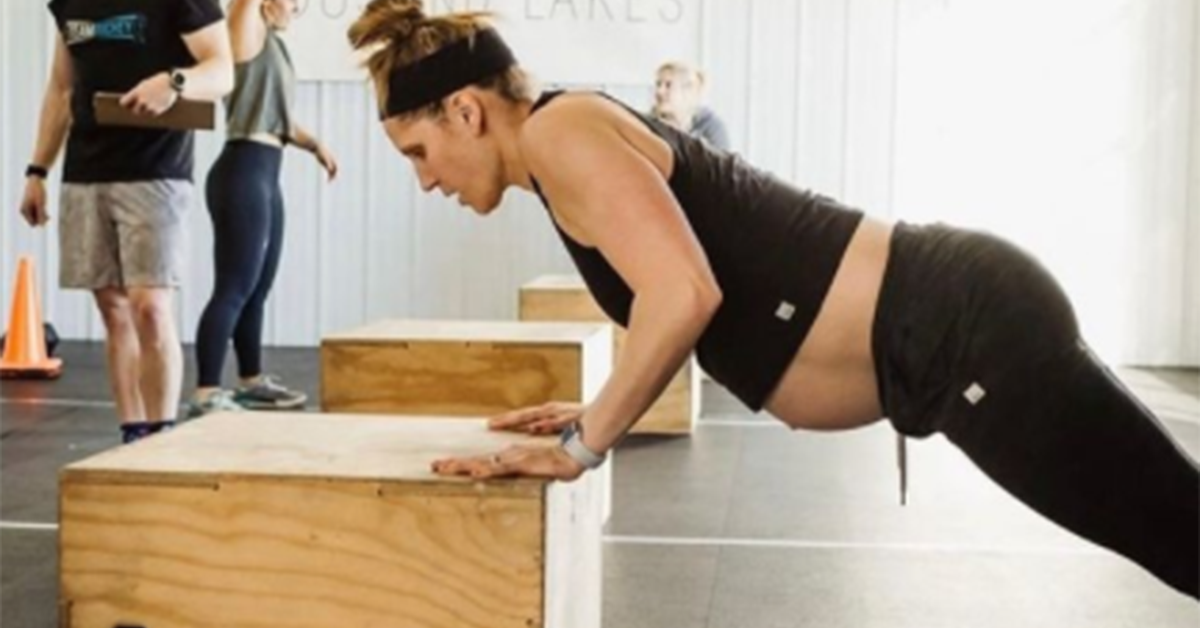Listen to your body.
Maybe the best piece of advice when it comes to scaling CrossFit workouts while pregnant.
Most avid CrossFit athletes who become pregnant expect that if they are able, they’ll continue to do CrossFit in some capacity throughout the pregnancy. While some women are comfortable jumping rope and lifting barbells for the whole nine months, many feel the need to scale movements early on.
Continuing to move your body and practice functional movement is beneficial for you and baby. With this in mind, we’ve compiled some practical scaling tips for use from the second you get a positive pregnancy test until the day you’re headed to the delivery room.
Jumping and Running
Many women began to feel uneasy jumping and/or running early on in pregnancy. When a woman is pregnant, her body releases a hormone called relaxin, which loosens her ligaments in preparation for childbirth.
Oftentimes, high-impact movements such as jumping and running put extra strain on those ligaments, and for some, it becomes uncomfortable.
There are many options to scale the various functional movements that involving jumping and running.
Box Jumps
Do step-ups instead. If you are confident using the box height you normally use, do so. But if you feel at all unstable, use a lower box.
Step up onto the box and step down off of the box to keep the impact to a minimum.
Double-Unders
The intent of double-unders is to raise your heart rate, so there are several options to replace them.
Use the Assault bike as an evil—yet effective—substitute for double-unders or running. Try biking as many calories as a third of the prescribed double-unders in the day’s workout. If the workout calls for 30 double-unders, bike for 10 calories, for example. If you’re replacing a run, bike the same distance as the run.
The Concept2 Rower is a great tool to raise your heart rate. Try to make the time component equal. If the workout calls for 100 double-unders and that normally takes you around two minutes, try a 400-meter sprint or an appropriate distance for you that replicates the time domain. If you’re replacing a run, row the same distance as the run.
If a little light jumping is still feeling OK to you, try toe taps on a plate. Alternating feet, rapidly tap your toes on a bumper plate. Use the same number of reps as the double-under prescription for the day’s workout. If the workout has 50 double-unders, try 50 toe taps, 25 on each foot.
Barbells
Once the belly starts obstructing your bar path, using dumbbells is an easy way to scale the day’s workout. A barbell clean turns into a dumbbell clean, a barbell snatch turns into a one-arm dumbbell snatch, and so on.
But if you have a love for the barbell and want to use one throughout pregnancy, there are many options.
Deadlifts
If the bottom position of a traditional deadlift starts to feel awkward, try a sumo-stance deadlift. This provides a space for the belly to go at the bottom of your lift.
Snatch and Clean
For barbell movements such as the clean and snatch, try lifting from the hang position. Eliminating the first pull and lifting the barbell from the hang will make you much more aware of where your belly is and what you have to do to move around it.
Lift Less Weight
Keep it light. For most of us, pregnancy is not the time to hit weightlifting PRs. In the early stages, a heavy barbell might feel good, but as you grow larger and more fatigued, lighter loads may treat you better.
Consider this a time to go back to basics and really perfect your technique under light weight.
Sit-ups and Toes-to-Bars
As your belly gets bigger and your abdominal wall expands to make room for baby, you’ll need to scale movements like sit-ups, toes-to-bars and the like.
Try a walking plank for toes-to-bars, or a static plank for sit-ups. Do as many “steps” in a walking plank as there are toes-to-bars prescribed in the workout. Replace the number of sit-ups with as many seconds in a plank hold: Thirty sit-ups equals a 30-second plank hold.
Kipping
Oftentimes, pregnant women are advised not to kip. It has been speculated that the kipping motion may exacerbate diastasis recti, or abdominal separation.
Whether you feel great kipping or you’re a little wary, the good news is that strict movements will always be beneficial to an athlete. Practice strict pull-ups and strict ring dips. It will pay off in dividends when you’re suddenly several pounds lighter after giving birth.
Burpees and Push-ups
Once the belly prevents you from lying on your stomach during burpees or getting full range of motion in a push-up, try both movements with your hands on a bench.
If you’re comfortable, try still going to the ground, but using your knees as a kickstand to keep that belly safe.
Inversions
Missing handstands but dizzy when inverted? Try holding moderate-weight dumbbells overhead in an active shoulder position for 30 seconds at a time. You’ll obtain a similar stimulus and build strength.
Practice strict dumbbell presses or push presses in lieu of handstand push-ups to keep your shoulders ready for inversions again when your body is.
Enjoy it!
Pregnancy is a wondrous time in life. For an athlete, it can be frustrating to abandon performance for nine months while you’re focusing on a healthy baby and mama. But functional movements are just that: functional. Your body will thank you during pregnancy, labor and beyond.



















